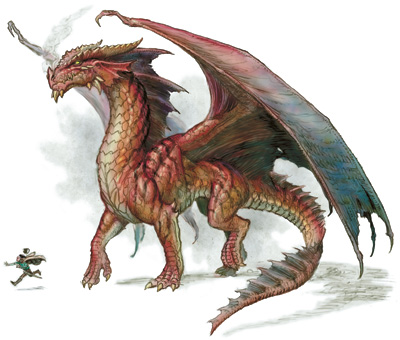
A dragon is a legendary creature, typically with serpentine or reptilian traits, that features in the myths of many cultures. There are two distinct cultural traditions of dragons: theEuropean dragon, derived from European folk traditions and which is ultimately related to Greek and Middle Eastern mythologies, and the Chinese dragon, with counterparts in Japan, Korea and other East Asian countries.
The two traditions may have evolved separately, but have influenced each other to a certain extent, particularly with the cross-cultural contact of recent centuries. The English word "dragon" derives from Greek δράκων (drákōn), "dragon, serpent of huge size, water-snake".[1]
In 217 A.D., Flavius Philostratus (Greek: Φλάβιος Φιλόστρατος)[5] discussed dragons (δράκων, drákōn) in India in The Life of Apollonius of Tyana (II,17 and III,6–8). The Loeb Classical Library translation (by F.C. Conybeare) mentions (III,7) that "In most respects the tusks resemble the largest swine’s, but they are slighter in build and twisted, and have a point as unabraded as sharks' teeth."
According to a collection of books by Claudius Aelianus (Greek: Κλαύδιος Αιλιανός)[6] called On Animals, Ethiopia was inhabited by a species of dragon that hunted elephants. It could grow to a length of 180 feet and had a lifespan rivaling that of the most enduring of animals.[7]

thats cool
ReplyDelete